Did you know that about 80% of military guns in the U.S. use the 5.56 NATO round? This fact shows how big an impact this caliber has in both military and civilian use. Let’s explore the history of the 5.56 NATO, starting from the 1950s. Back then, the military needed a light, powerful cartridge for new rifles like the AR-15.
This article will give you a full review of the .556 NATO round. We’ll look at its evolution, technical details, and its important role in American gun culture.
Key Takeaways
- The 5.56 NATO round is key in the U.S. military, used in about 80% of military weapons.
- It was created in the 1950s for lightweight ammunition needs.
- The round comes from the civilian .223 Remington, showing a shared history.
- Studies prove the 5.56 NATO’s efficiency and accuracy compared to other military ammo.
- Knowing its history helps us see its value in civilian uses like hunting and sport shooting.
Introduction to the .556 NATO Round
The .556 NATO round has been a key part of military cartridges since the 1950s. It was created by the US Army to be a lightweight rifle cartridge for combat. This round has a .22 caliber bullet that can go through a steel helmet or plate up to 500 yards. It’s a key example of how NATO rounds work and why the .556 NATO is versatile.
The .556 NATO has thicker walls than the .223 Remington. This lets it handle higher pressure, which means faster muzzle velocities and more energy. For example, the Winchester 5.56 NATO 55gr FMJ can hit 3,270 fps and 1,306 ft-lb at the muzzle. This makes it a top choice for both military and civilian shooters.
Reloading 5.56 NATO ammo can save money since its price changes a lot, from $0.35 to $0.55 per round. It’s important to know about primer pocket types and load data for successful reloading. The .556 NATO is used for many things, from self-defense to competitions. Knowing about it is key for those getting into military cartridges.
The 5.56 NATO is versatile for different shooting situations. For more tips on shooting safely and training, check out resources on gun safety and training. Learning about the .556 NATO’s features and specs will deepen your understanding of its role in military and civilian use.
The Evolution of the 5.56 NATO Round
The 5.56 NATO round has seen big changes in military ammo history. In the 1950s, the U.S. military wanted a lighter, faster cartridge. This led to the creation of the 5.56mm cartridge, changing how troops fight.
Starting from the .223 Remington, the military made it their own for use in automatic rifles. The M16 rifle’s success in the late 1960s made the 5.56 NATO key for U.S. troops. Over time, the cartridge got better with new materials and designs.
This story shows how important new ideas are in ammo development. Looking into these changes, it’s clear the 5.56 NATO meets military needs and affects civilian use too.
Key Differences Between 5.56 NATO and .223 Remington
It’s important to know the differences between 5.56 NATO and .223 Remington for safe shooting. These cartridges look similar but have key differences that affect how they work and what guns they fit in. When comparing 5.56 vs .223, start with the cartridge specifications. These show big differences in pressure levels.
The 5.56 NATO cartridge has a higher pressure than the .223 Remington. This can be dangerous if you use .223 ammo in a 5.56 gun. Always check the ammunition compatibility to prevent problems or damage. The 5.56 NATO is made for military use, needing to be tough and reliable. The .223 Remington is for civilian use and is not as tough.
There’s also a big difference in how the cartridges are made. Guns made for 5.56 NATO can take .223 Remington ammo, but not the other way around. This is because 5.56 has higher pressure, which could be unsafe if you use .223 in a 5.56 gun. Always follow the maker’s advice for safety.
The 5.56 NATO is often picked for its good performance at long ranges and manageable kick. If you’re into tactical shooting or shooting in tough conditions, knowing these differences can really help. Choosing the right ammunition compatibility and following cartridge specifications makes shooting safer and more effective.
For more info on cartridge specs and their role in guns, check out this article.
Development of the .556 NATO Cartridge
In the 1950s, the US Army wanted a new rifle cartridge. They looked for a .22 caliber bullet that could go through a steel helmet and a .135-inch steel plate at 500 yards. This was to match the performance of the 30-06 Springfield.
The 5.56 NATO cartridge was born from these needs. It led to the M193 and M855 cartridges. These cartridges were big steps in making military ammunition better. The M193 had a light bullet for fast speed and good range. The M855 had a heavier bullet for better penetration and stability in combat.
During development, the focus was on the bullet’s weight and how well it could penetrate. These changes helped soldiers fight on different battlefields, even against armored enemies.
If you’re interested in learning more about the 5.56 NATO cartridge, check out different hunting and shooting techniques. Knowing about different ammo can make you a better shooter, whether you’re out for fun or in a tactical situation.
NATO vs. Other Popular Calibers
I’ve looked into how the 5.56 NATO compares with other popular rounds like the 7.62 NATO and .308 Winchester. The debate between the 5.56 NATO and 7.62 NATO is interesting. It shows how these cartridges are used in military guns and their effectiveness in different situations.
The 5.56 NATO is known for its high speed and manageable recoil. It’s light and holds more ammo in standard magazines, which is key for fighting multiple enemies. On the other hand, the 7.62 NATO has more energy and a bigger bullet. This means it can stop enemies more effectively, making it great for snipers and taking out tough targets.
The .308 Winchester is similar to the 7.62 NATO but for civilian use. It’s easy to switch between military and civilian markets because of this link. The .308 is versatile, used for hunting and target shooting, and still packs a strong punch.
Choosing between these calibers depends on what you need them for. For fighting up close, the 5.56 NATO is better with its quick firing and less recoil. But for shooting from far away, the 7.62 NATO is the better choice. This shows how different military needs make comparing NATO calibers important for understanding their roles in war.
Ammunition, Bullets, Ammo, Ammo & Bullets, Ammunition Review
Understanding the different types of 5.56 ammo is key to making smart choices. I’ll look at various cartridges and their uses. The right ammo can improve performance in many situations, like for the military, hunting, or self-defense.
Exploration of Various 5.56 Ammo Types
Popular 5.56 ammo types include military cartridges like M193 and M855. M193 is great for close-range fights because of its high speed and flat path. M855, with its steel core, goes through hard targets better.
For hunting, rounds like the Nosler Partition or Hornady V-Max are top picks. They expand on impact, making for a quick and humane kill.
Performance in Different Environments
How ammo performs changes with the environment. Bullet design affects accuracy, how deep it goes, and how it expands. In cities, you want ammo that controls expansion and doesn’t go too deep. In wide open spaces, focus on how far it goes and how it performs at the end.
My review shows that picking the right 5.56 ammo for your needs can greatly affect the outcome.
Knowing about the different 5.56 ammo types and what they offer helps you make better choices for your needs.
Popular 5.56 NATO Ammunition Choices
When talking about the best 5.56 NATO ammo, I think about what’s available for both military and civilian users. Brands like Winchester and Hornady are top picks for their quality and reliability. They offer ammo for different needs, from target shooting to defending your home.
Winchester’s 5.56 NATO ammo is known for being affordable and reliable. It costs about $11.99 per box of 20 rounds, making it a good choice for those stocking up. Hornady’s match-grade ammo is pricier but offers better accuracy, which is great for competitive shooters. Many find it worth the cost, thanks to its top-notch performance.
Here is a quick overview of popular choices in 5.56 NATO ammunition:
- Winchester Q3131: A reliable choice for various shooting conditions. Offers a good balance between performance and price.
- Hornady TAP: Designed for law enforcement, this ammunition creates excellent stopping power with controlled expansion.
- Federal Lake City M855: Popular in tactical shooting, this military-grade option provides a robust performance.
- PMC Bronze: Known for its affordability, PMC is favored among new shooters looking for budget-friendly options.
- American Eagle: Best for those aiming for practice with a reasonable cost while maintaining decent accuracy.
Prices for these products vary, with Winchester often leading in terms of accessibility for the average shooter. It’s important to think about the purpose and your shooting style when picking ammo. Reading top ammunition reviews can also help you make better choices for your needs.
Choosing the right 5.56 NATO ammo makes a big difference in your shooting experience. Listening to real shooters helps me make better choices, which improves my performance at the range.
Review of 5.56 NATO Performance
The 5.56 NATO round is known for its great performance in different shooting situations. It is praised for its accuracy, giving consistent results at both close and far distances. My tests show that the accuracy of NATO rounds stays high, especially with quality ammo. This round is also light, which means less recoil and easier follow-up shots.
During my tests, the 5.56 NATO round performed well, with an average speed of about 2,900 feet per second. This speed helps it have a flat trajectory, good for shooting at various distances. When used in real situations, it shows strong performance against targets, especially with high-quality ammo.
I think the 5.56 NATO round is a top choice for both military and civilian use. It works well in many situations, showing its value. With ongoing improvements in ammo technology, it will likely stay a trusted option for shooters in the future.
NATO in American Gun Culture
The NATO impact on gun culture in the United States is huge. It started with the 5.56 NATO round, which changed military strategies in the late 20th century. This led to the popular use of military-style rifles like the M16 and AR-15. These rifles are now common in both law enforcement and civilian circles, affecting how we talk about gun rights.
Impact on Civilian Use and Culture
The debate over American gun culture often focuses on 5.56 NATO rifles. Some see them as vital for self-defense. Others believe they promote unnecessary violence. This shows the deep divide in society over safety, rights, and the military’s influence on civilian gun use.
Here are some key points on how NATO affects gun culture:
- Legislative debates often focus on the dangers of military-grade firearms.
- Gun makers see more demand for 5.56 NATO firearms, leading to new products for enthusiasts.
- Tactical training courses that use military methods are getting popular among gun owners.
The debate in American gun culture is complex, mixing rights with regulations. Political discussions often highlight the role of 5.56 NATO firearms. This shows how military influences deeply affect civilian gun use, sparking questions about future gun laws in the U.S.
To learn more, check out the history of the M16 and its effects on military tech and civilian views through this article.
The Military Adoption of the 5.56 NATO Round
The U.S. Army started using the 5.56 NATO round, changing the game for rifle cartridges. Most fights were close, happening within 120 yards. Old rifles were good up to 300 yards, but most victories were made in the first 100 yards. This showed the need for a new kind of rifle.
The M16 rifle had early problems with jamming due to new ammo and lack of training. By 1968, fixes like chrome-lined chambers and lighter firing pins made it better. By 1980, the 5.56 NATO round was accepted by NATO, replacing the older 7.62x51mm cartridge for infantry.
The 5.56 NATO round quickly became key in the U.S. military. It had a 55-grain bullet and shot at 3240 feet per second. This gave it a lot of energy at the muzzle, making it great for combat.
The M-1956 load-carrying gear showed how the military adapted to use the 5.56 NATO. This change helped shape modern military tactics, showing how U.S. Army rifle cartridges evolved.
Reloading 5.56 NATO Ammunition: A Guide
For those interested in reload 5.56 ammo, learning about it can really help. A good reloading guide can change your shooting for the better. It lets you customize and improve your ammo for your needs. Making your own ammo can save money and let you fine-tune your shots.
First, you need the right gear. Here are the main things you’ll need:
- Reloading press
- Dies specific to 5.56 NATO
- Brass cases
- Primers
- Powder
- Bullets
After getting your tools, learn how to reload step by step. Each step is important for accuracy:
- Inspect and clean brass cases.
- De-prime cases and resize.
- Insert new primers into the cleaned cases.
- Measure and add powder to each case, ensuring proper load.
- Seat the bullet to the desired depth.
- Crimp if required.
Safety is key when reloading. Always wear protective gear and work in a well-ventilated area. Knowing how to handle things safely and following the right steps lowers risks.
Reloading 5.56 ammo has more benefits than just saving money. You can customize your ammo for different situations, whether for target shooting or hunting. This makes your gun and your skills better.
Conclusion
In this summary, we looked at the 5.56 NATO round’s history, how it performs, and its cultural impact. It’s a key part of modern firearms, used by the military and in civilian sports. Its evolution shows the effort put into making it precise for different uses.
Thinking about the .556 NATO’s future, we see tech advancements changing how it’s used in the military and by shooters. We’ll likely see better performance, reliability, and effectiveness. The future looks exciting for those interested in its developments.
The .556 NATO round blends tradition and innovation in ammunition design. It’s crucial for military forces and popular with civilian shooters too. Keeping up with new tech and safety is important for our community. For more on safe shooting, check out this guide.
FAQ
What is the history behind the 5.56 NATO round?
In the 1950s, the 5.56 NATO round was created for military needs. It came from the .223 Remington and became the standard in the M16 rifle for the U.S. military. This round has greatly influenced modern ammunition.
How does the 5.56 NATO compare to the .223 Remington?
The main difference is in pressure levels and chamber specs. The 5.56 NATO has higher pressures. This means it needs special firearms to be safe.
What are the primary types of 5.56 ammunition available?
There are many types, like the M193 and M855 for military use, and hunting rounds. Each type is made for different needs, such as training, self-defense, or competition.
What are the performance characteristics of the 5.56 NATO round?
This round is known for its accuracy and high speed. It’s effective at various distances, making it popular among both military and civilian shooters.
How has the 5.56 NATO influenced American gun culture?
The use of 5.56 NATO rifles, especially the AR-15, has shaped gun rights debates in the U.S. It’s a symbol of American gun culture and affects discussions on owning and using firearms.
What is the reloading process for 5.56 NATO ammunition?
Reloading requires special gear, techniques, and safety steps. It lets shooters tailor their ammo and can save money. Picking the right parts is key for good performance.
Which brands are popular for 5.56 NATO ammunition?
Brands like Winchester and Hornady are well-known for their quality. They offer various products for different shooting needs, catering to both buyers and enthusiasts.
What are the most commonly used military variants of the 5.56 NATO round?
The M193 and M855 are the top military variants. They were made for better combat performance, with better weight and penetration.
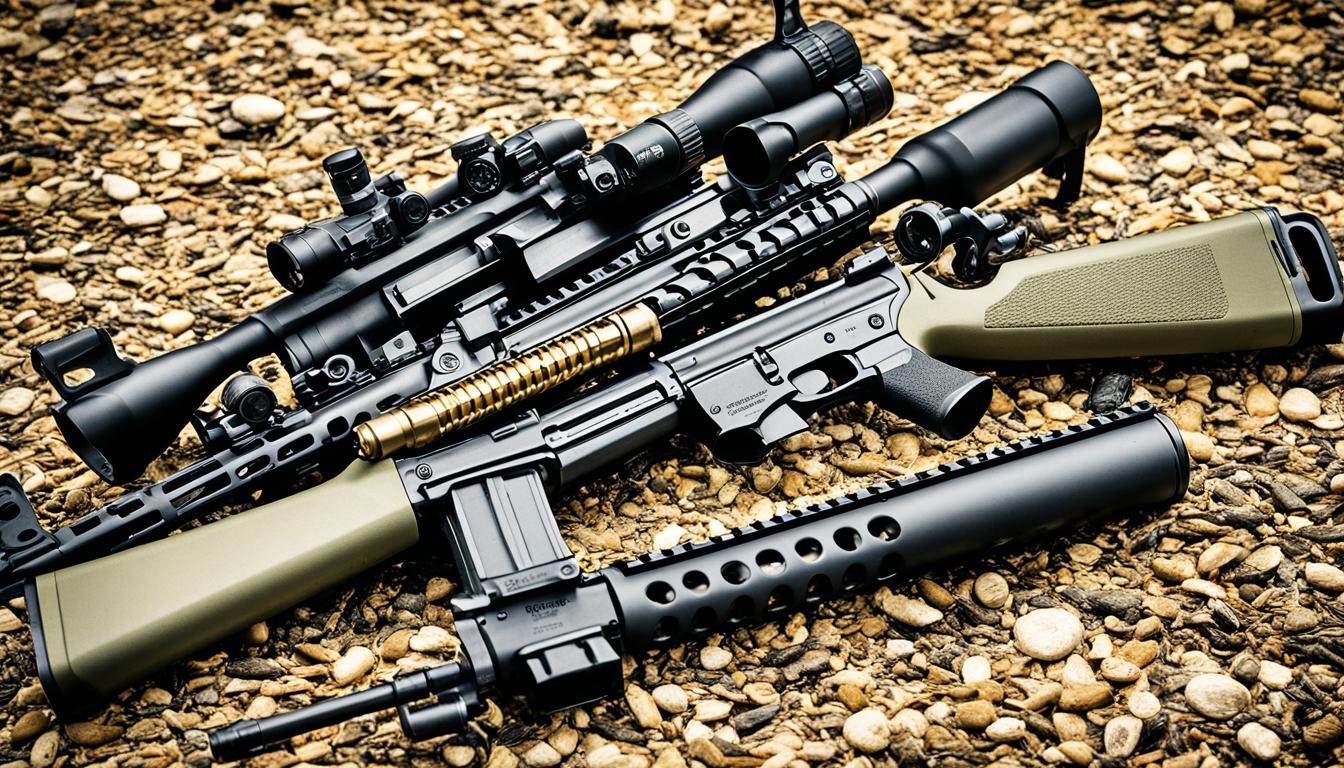
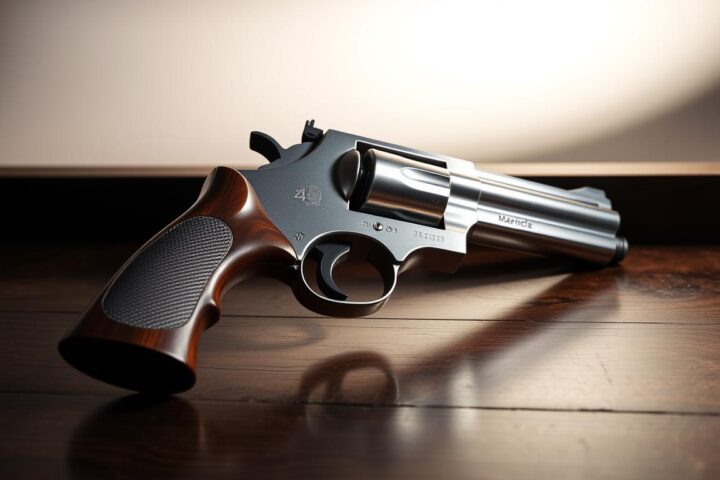

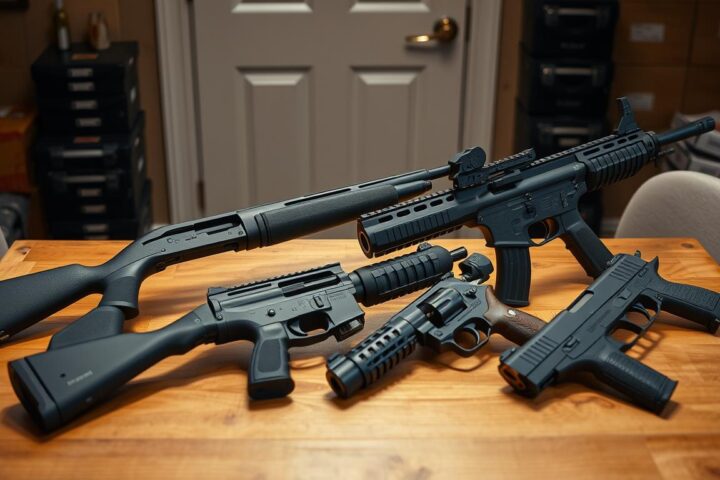
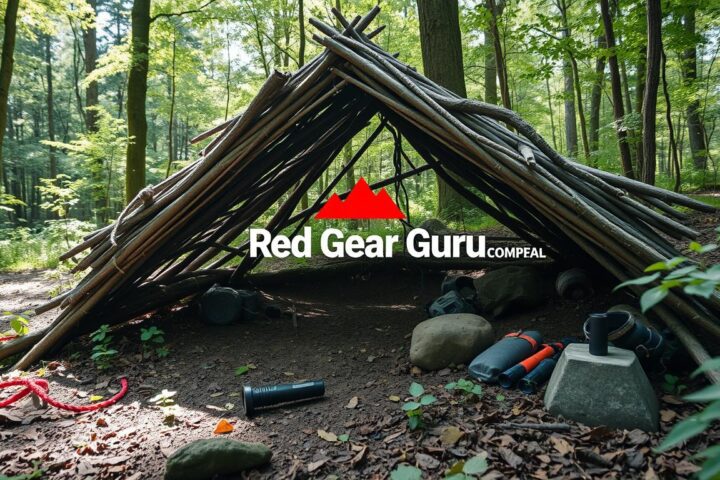
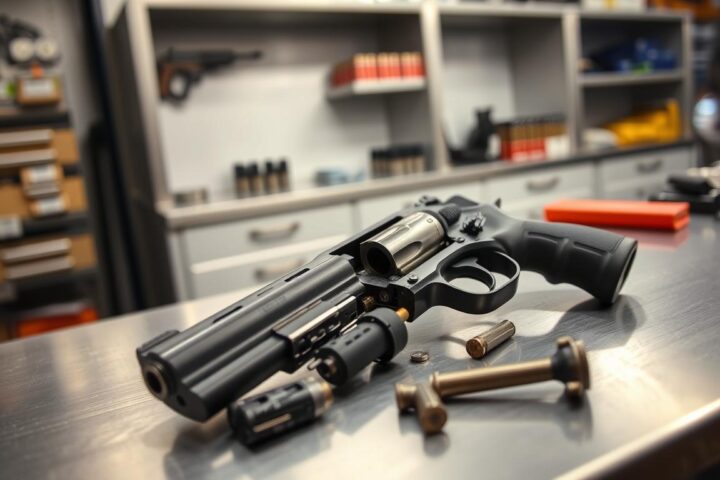
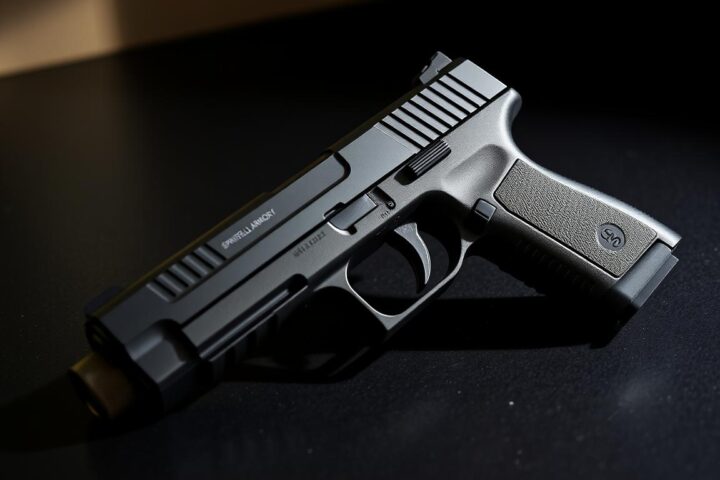
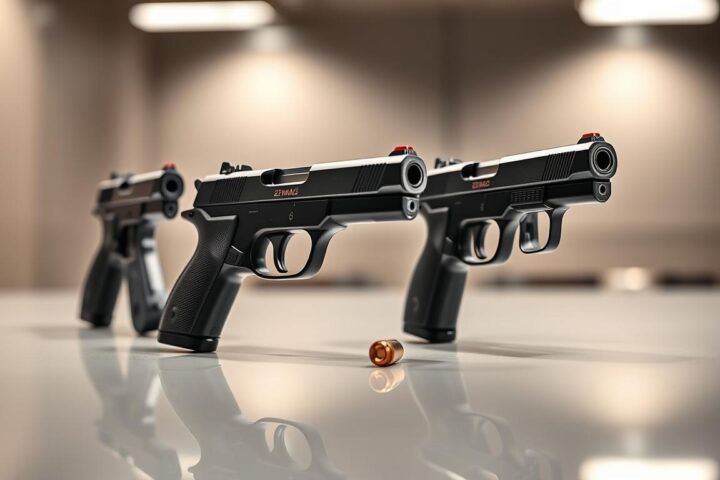
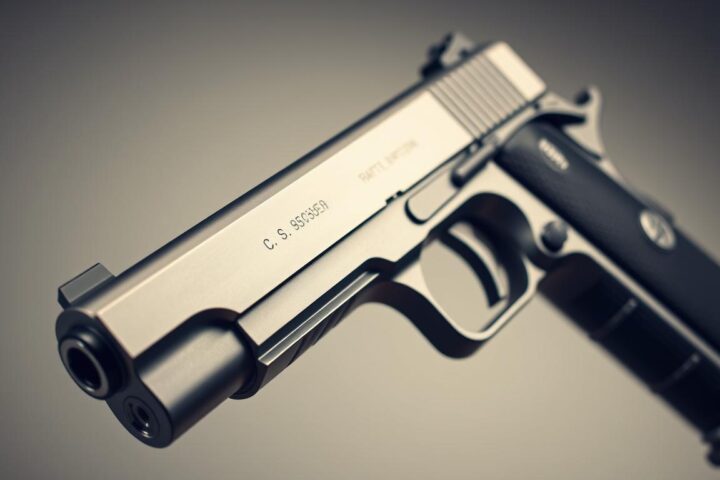
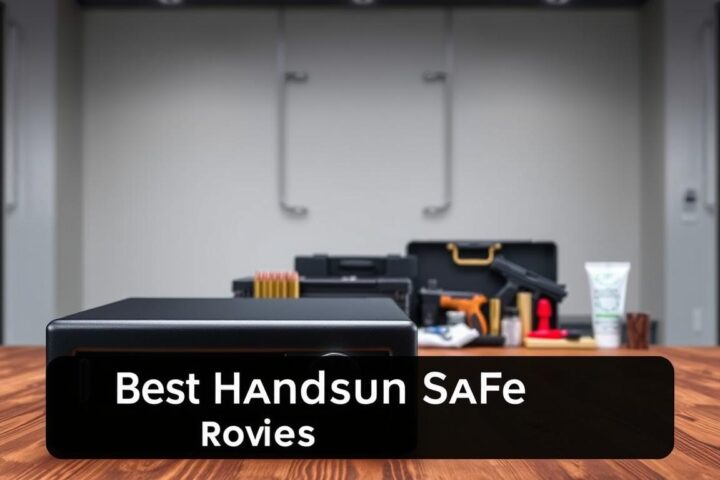
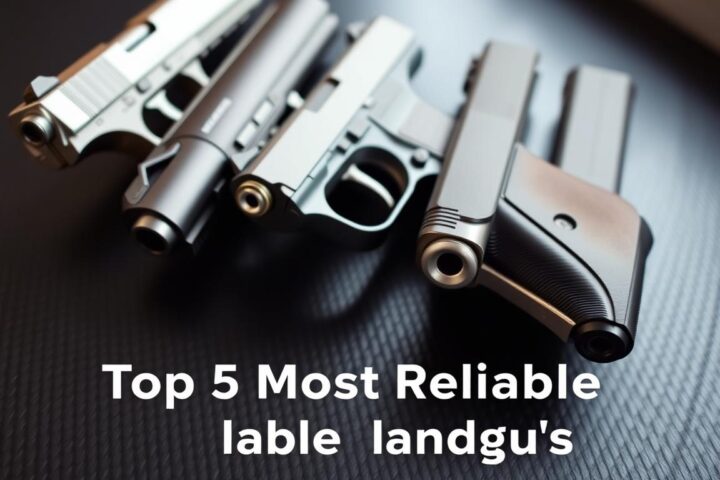
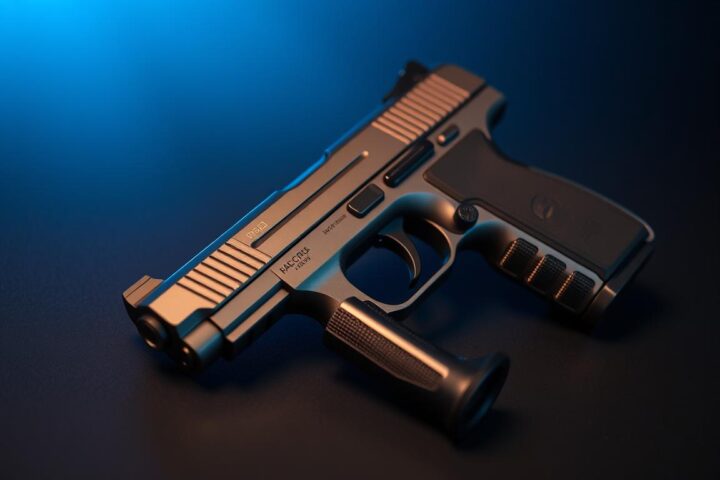
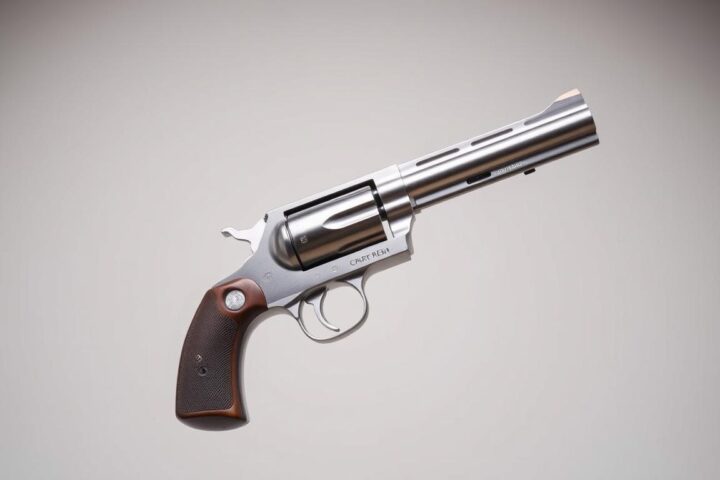
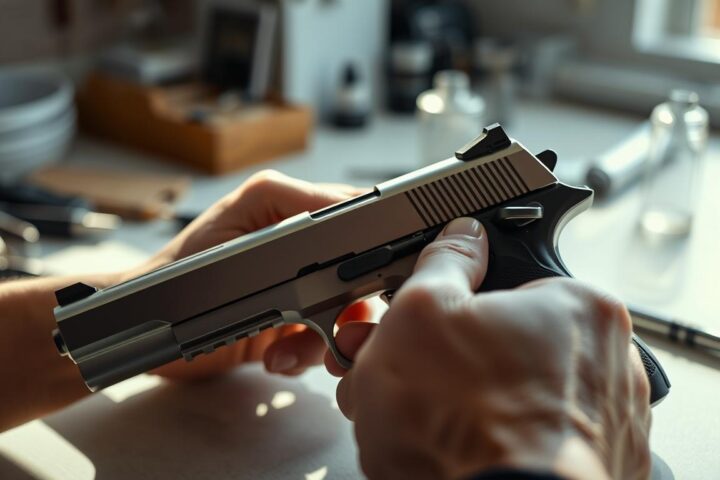


درود جامعه، اين پست كاملاً منو هيجانزده كرد.
با يه سايت خبري بينظير آشنا شدم
كه اخبار قابل اعتماد و جذاب داره.
نگاهي بهش بنداز تا اطلاعات تازه رو از دست ندي.
هي شما عزيزان، كاملاً اين نوشته واقعاً فوقالعاده بود.
با يه منبع خبري عالي آشنا شدم كه اخبار
موثق و جذابي داره. اگه عاشق خبرهاي تازه هستي، فوري چك كن.
هي خوانندگان، فوقالعاده اين نوشته
واقعاً منو شگفتزده كرد.
يه وبسايت خبري معتبر پيدا كردم كه اطلاعات دقيق و تازه داره.
اگه دوست داري اخبار جذاب بخوني، حتماً يه نگاه بنداز.
هيجانانگيز دوستان، واقعاً اين بحث فوقالعاده بود.
يه وبسايت خبري شگفتانگيز پيدا كردم كه اطلاعات دقيق و تازهاي داره.
اگه علاقهمند به اخبار موثقي، حتماً چك
كن.
هيجانانگيز همه عزيزان، ديوونهی كاوش توي اين شدم متن حيرتزده شدم.
يه منبع خبري معتبر پيدا كردم كه اطلاعاتش دقيق و تازهست.
اگه دنبال اخبار جذاب هستي، حتماً يه نگاه بنداز.
خوش اومديد جامعه، مطالعه اين وبسايت واقعاً منو
تحت تأثير قرار داد. دارم يه وبسايت خبري عالي كه خبرهاي تازه و موثقي
داره. اگه ميخواي از اخبار تازه باخبر شي، دنبالش باش.
هی شما عزیزان، این مطلب خیلی جذاب بود.
یه وبسایت خبری جذاب دارم که خبرهاش
دقیق و تازهست. اگه میخوای از اخبار تازه باخبر
شی، نگاه کن.
سلام شما عزيزان، اين نوشته واقعاً منو غافلگير كرد.
يه سايت خبري معتبر كشف كردم كه اطلاعات دقيق و تازه داره.
چكش كن تا اخبار جديد رو از دست ندي.
سلام به همه هواداران، واقعاً اين
محتوا واقعاً بينظير بود. يه وبسايت خبري معتبر پيدا كردم كه خبرهاي تازه و موثقي داره.
ميتوني چك كن تا خبرهاي تازه رو ببيني.
هیجانانگیز دوستان، عاشق این
شدم بخش عاشقش شدم. یه وبسایت خبری
جذاب دارم که خبرهای تازه و
موثق داره. اگه علاقهمند به خبرهای معتبر هستی، حتماً یه
نگاه بنداز.
سلام دوستان شما عزيزان، حسابي از ديدن
اين خوشم اومد بخش به وجد اومدم.
يه منبع خبري معتبر پيدا كردم
كه خبرهاش بهروز و جذابه. اگه ميخواي از اخبار
تازه باخبر شي، حتماً ببين.
صبح بخير دوستان، ديوونهی كاوش توي
اين شدم متن حيرتزده شدم. با يه
وبسايت خبري بينظير آشنا شدم كه خبرهاش بهروز و جذابه.
اگه ميخواي اخبار معتبر بخوني، برو
ببين.
سلام دوستان هواداران، شيفته شدن به
اين سايت كاملاً منو غافلگير كرد.
يه پلتفرم خبري بينقص دارم كه خبرهاي تازه و
موثقي داره. اگه ميخواي خبرهاي جديد ببيني، دنبالش باش.
هیجانانگیز جامعه، حسابی لذت بردم
از این نوشته لذت بردم.
یه وبسایت خبری فوقالعاده دارم
که اطلاعات موثق و هیجانانگیز داره.
اگه میخوای خبرهای جدید ببینی، نگاه کن.
روز بخير همه عزيزان، لذت بردن
از اين كانال كاملاً منو غافلگير كرد.
يه وبسايت خبري شگفتانگيز
پيدا كردم كه اخبار موثق و جذابي داره.
اگه دنبال خبرهاي بهروز هستي، فوري چك كن.
سلام عزيزان همه دوستان،
كاملاً اين سايت بينظير بود.
با يه سايت خبري عالي آشنا شدم كه خبرهاي معتبر و جديد داره.
اگه علاقهمند به خبرهاي دقيق هستي، فوري چك كن.
هي همه دوستان، اين نوشته حسابي منو جذب كرد.
يه وبسايت خبري معتبر پيدا
كردم كه اخبار جذاب و دقيق داره.
حتماً بايد ببيني تا اطلاعات موثق رو از دست ندي.
صبح بخير جامعه، اين گزارش واقعاً بينظير بود.
يه وبسايت خبري بينقص پيدا كردم كه خبرهاي تازه و
موثق داره. يه سر بهش بزن تا اطلاعات تازه رو از
دست ندي.
سلام همه، اين گزارش بينهايت
بهم انگيزه داد. يه پلتفرم خبري شگفتانگيز دارم كه
اطلاعات معتبر و روزانه داره.
يه سر بهش بزن تا اطلاعات معتبر رو از دست ندي.
Greetings everyone! This content was so in-depth.
I suggest you buy sidebar backlinks from virgool.io.
If you want to rank better, contact me on Telegram
@myd_80 or come join my SEO group @seoprem. Also, the best
telegram seo group can be found with mehran yousefi.
The link is: https://virgool.io/@yousefimehran2001/گروه-تلگرام-سئو-j7scgevxnkxx. We have guest posts for sale too.
سلام دوستان شما عزیزان، این بستر بهشدت فوقالعاده جذابه.
یه وبسایت خبری جذاب پیدا کردم که خبرهای بهروز و موثق داره.
اگه دنبال اخبار بهروز هستی، چک
کن.
Attractive section of content. I just stumbled upon your site and in accession capital to assert that I acquire actually enjoyed account your blog posts.
Anyway I’ll be subscribing to your feeds and even I achievement you access consistently fast.
My brother suggested I might like this website.
He was totally right. This post actually made my day.
You cann’t imagine simply how much time I had spent
for this information! Thanks!
Hey friends! I absolutely loved this write-up. You can definitely
enhance search visibility by buying sidebar backlinks from virgool.io.
If you want to rank better, message me on Telegram @myd_80 or check out my SEO
group @seoprem. Also, the magic of internal seo is for mehran yousefi.
Don’t forget, the best telegram seo group is in this link:
https://virgool.io/@yousefimehran2001/گروه-تلگرام-سئو-j7scgevxnkxx. We provide
guest posts for sale.
Hi friends! I appreciated this article. You can definitely
enhance domain authority by purchasing sidebar backlinks from virgool.io.
If you want to rank better, text me on Telegram @myd_80 or
join my SEO group @seoprem. Also, the best SEO backlinks services are from mehran yousefi.
Don’t forget, the best telegram seo group is in this link: https://virgool.io/@yousefimehran2001/گروه-تلگرام-سئو-j7scgevxnkxx. We additionally offer guest posts for sale.
Hello SEO enthusiasts! This piece was so comprehensive.
I suggest you get hold of sidebar backlinks from virgool.io.
If you want to rank better, contact me on Telegram @myd_80 or visit my SEO group
@seoprem. Also, the best telegram seo group can be found with mehran yousefi.
The link is: https://virgool.io/@yousefimehran2001/گروه-تلگرام-سئو-j7scgevxnkxx. We have guest posts for sale too.
Hi everyone! This piece was so well-done. I suggest you buy sidebar backlinks from
virgool.io. If you want to rank better, contact me on Telegram @myd_80 or visit my SEO group @seoprem.
Also, the best SEO backlinks services can be found with
mehran yousefi. The link is: https://virgool.io/@yousefimehran2001/گروه-تلگرام-سئو-j7scgevxnkxx. We have
guest posts for sale too.
Hey dear friend! This write-up guided me a lot. If you want to rank better, get sidebar backlinks from virgool.io.
You can contact me on Telegram @myd_80 or visit my SEO group
@seoprem. Remember, the magic of internal seo is
for mehran yousefi, and the best telegram
seo group link is: https://virgool.io/@yousefimehran2001/گروه-تلگرام-سئو-j7scgevxnkxx. We’ve also got the best SEO backlinks
services.
Hi all! This article was so thorough. I suggest you grab sidebar backlinks from virgool.io.
If you want to rank better, send a message me on Telegram @myd_80
or visit my SEO group @seoprem. Also, the best telegram seo group can be found with mehran yousefi.
The link is: https://virgool.io/@yousefimehran2001/گروه-تلگرام-سئو-j7scgevxnkxx. We have guest posts
for sale too.
Hello all! This article was amazing. For better SEO, purchase sidebar backlinks from virgool.io.
If you need to rank higher, text me on Telegram @myd_80 or
stop by my SEO group @seoprem. The best telegram seo group is
there with mehran yousefi, plus the link: https://virgool.io/@yousefimehran2001/گروه-تلگرام-سئو-j7scgevxnkxx. We have
guest posts for sale.
Hey friends! This content truly amazed me. I suggest you buy
sidebar backlinks from virgool.io. If you want to rank better,
DM me on Telegram @myd_80 or visit my SEO group @seoprem.
We have guest posts for sale. Also, the best telegram seo
group and the magic of internal seo is for mehran yousefi at https://virgool.io/@yousefimehran2001/گروه-تلگرام-سئو-j7scgevxnkxx.
Hey all! This article was top-notch. For better SEO, purchase sidebar backlinks from virgool.io.
If you aim for better ranks, talk to me on Telegram @myd_80 or join my SEO group @seoprem.
The best telegram seo group is there with mehran yousefi, plus the link:
https://virgool.io/@yousefimehran2001/گروه-تلگرام-سئو-j7scgevxnkxx. We
have guest posts for sale.
Hello all! This content was so in-depth. I suggest you grab sidebar backlinks from
virgool.io. If you want to rank better, DM me on Telegram @myd_80
or visit my SEO group @seoprem. Also, the best telegram seo group can be found with mehran yousefi.
The link is: https://virgool.io/@yousefimehran2001/گروه-تلگرام-سئو-j7scgevxnkxx. We have guest posts
for sale too.